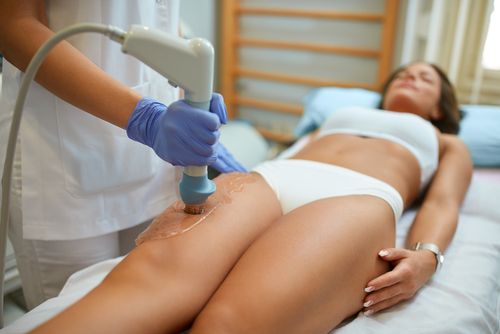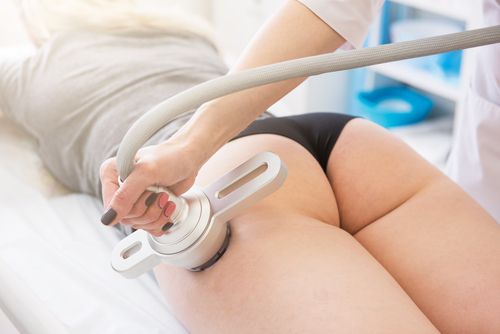
Thigh Lift

Weight loss has a great deal of benefits – increased energy, improved health and a slimmer shape are just some of the positive side effects of losing weight. However, significant weight loss, particularly when not accompanied by regular exercise, can leave patients with an abundance of excess skin. This is because once skin is stretched beyond normal capacity, stretchmarks appear that can damage its elasticity and stop it shrinking alongside your body.
At a time when you should be revelling in your new body, excess skin on your thighs can prevent you from having the confidence that you have earned. Thankfully, it is now possible to have thigh lift surgery to remove this loose skin to leave your thighs looking tight, toned and enviably beautiful.
Am I a suitable candidate for thigh lift surgery?
Before you can go ahead with a thigh lift procedure it will be necessary for you to have a consultation appointment with Dr. Metzinger to approve your candidacy. Dr. Metzinger will ask you comprehensive questions about your medical history, your overall health and wellbeing and your lifestyle.
To be considered a suitable candidate, patients must usually:
Have completed any weight loss they want to achieve and are at a healthy and stable weight.
Be in generally good health.
Be a non-smoker.
Not have any medical conditions that impair their ability to heal or put them at increased risk of complications.
Understand and accept the limitations that surgery offers and have realistic goals for the final appearance of their thighs.
Be committed to their long-term health and wellbeing through proper nutrition and exercise.
Is thigh lift surgery safe?
All surgical procedures carry some degree of risk. In a thigh lift, some of the possible side effects include:
Swelling at the site of incision.
Blood clots.
Changes in the sensation of the skin on the thighs due to nerve damage, including numbness and tingling.
Accumulation of fluid in the legs.
Infection.
Poor wound healing.

Types of thigh lift
There are two different types of thigh lift, each which targets specific areas in order to achieve particular results. These are:
Inner thigh lift
Also known as a medial thigh lift, in this procedure an incision is made in the crease where the thigh meets the pubic area. A small wedge of skin and fat is cut away and the edges then closed and secured with sutures. This causes the skin to tighten, creating a smoother and more contoured appearance.
Outer thigh lift
Also known as a lateral thigh lift, in this procedure the incision is made at the top of the leg along the line where your underwear would be. Again, excess skin and fat is cut away and this time the remaining skin is pulled up to create tension, before securing with sutures. Lateral thigh lifts can tighten the skin along both the left and right side of the leg, improving the aesthetic appearance.
Pain relief and recovery
You will be given a general anesthetic which will ensure that no pain or discomfort is experienced during the surgery. Once you wake up, you will find one or more thin tubes placed under the skin. These are a temporary measure and act as a drain to remove any excess blood of fluid that may collect. An overnight stay in our medical offices is usually required after surgery after which you will need a friend or relative to drive you home and ideally stay with you for at least the 24 hours.
Dressings will be applied to your incisions and you will also be given a compression garment to wear for at least the first week to help minimize swelling and support the shape of your thighs while you heal. You may experience some discomfort during the recovery process, but over the counter pain relief is usually sufficient to make this manageable.
Dr. Metzinger will advise that you take a minimum of seven to ten days off work while you heal. During this time, you will primarily need to relax and sleep in a reclining rather than flat position, as this will help the healing process. Gentle exercise in the form of walking should also be undertaken as soon as you are able as this will help preserve the longevity of your results and reduce any swelling. Swelling and bruising may last several months, but almost all patients can return to their usual day to day activities around four or five months after the surgery.
If excess skin on your thighs is getting you down, Dr. Metzinger has the skill and knowledge to deliver outstanding results. Contact his offices today to book a consultation appointment.
